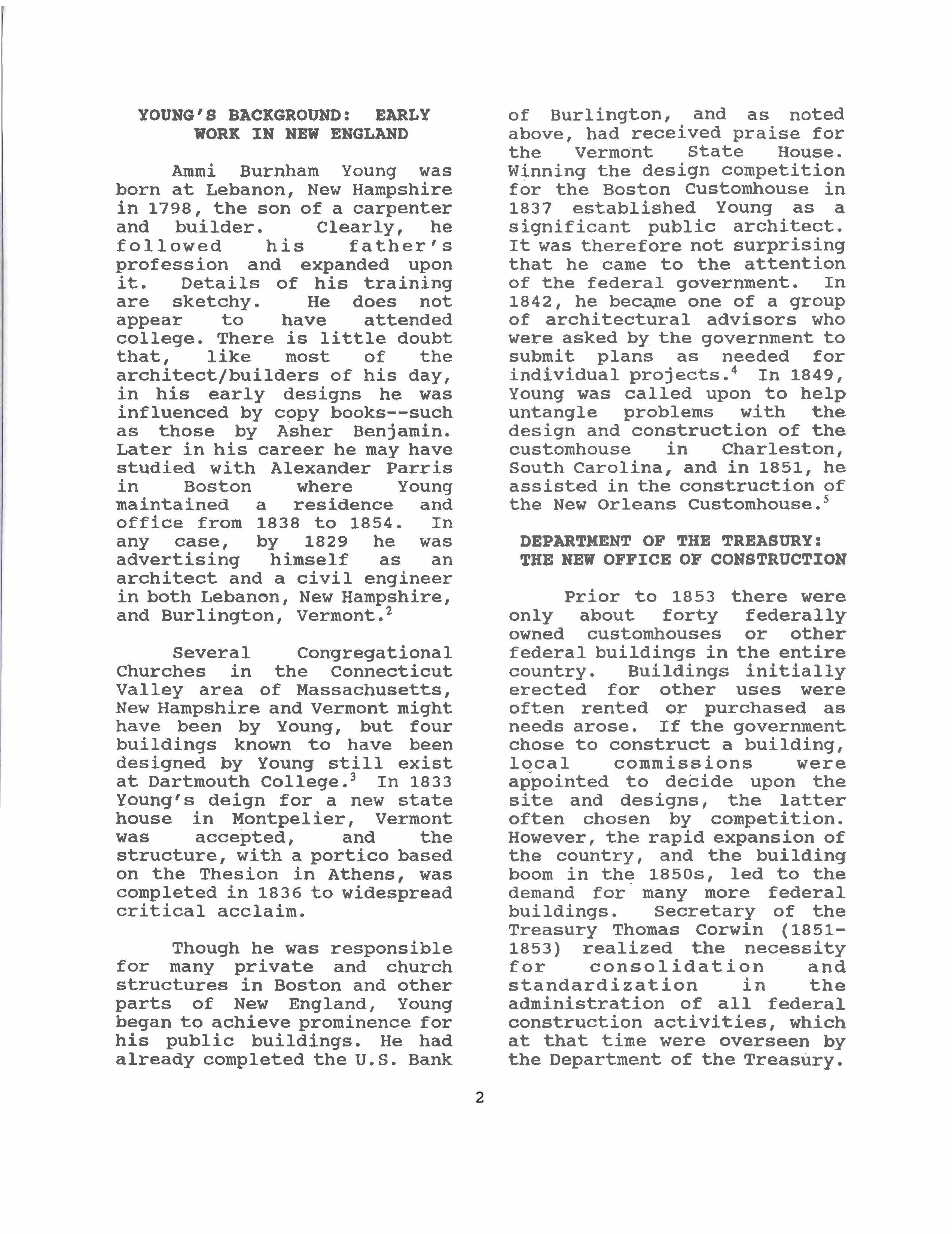

(Continued from Page 1)
YOUNG'S BACKGROUND: EARLY WORK IN NEW ENGLAND
Ammi Burnham Young was born at Lebanon, New Hampshire in 1798, the son of a carpenter and builder. Clearly, he followed his father's profession and expanded upon it. Details of his training are sketchy. He does not appear to have attended college. There is little doubt that, like most of the architect/builders of his day, in his early designs he was influenced by copy books—such as those by Asher Benjamin. Later in his career he may have studied with Alexander Parris in Boston where Young maintained a residence andoffice from 1838 to 1854. In any case, by 1829 he was advertising himself as an architect and a civil engineer in both Lebanon, New Hampshire, and Burlington, Vermont.
Several Congregational Churches in the Connecticut Valley area of Massachusetts, New Hampshire and Vermont might have been by Young, but four buildings known to have been designed by Young still exist at Dartmouth College. In 1833 Young's design for a new state house in Montpelier, Vermont was accepted, and the structure, with a portico based on the Thesion in Athens, was completed in 1836 to widespread critical acclaim.
Though he was responsible for many private and church structures in Boston and other parts of New England, Young began to achieve prominence for his public buildings. He had already completed the U. S. Bank of Burlington, and as noted above, had received praise for the Vermont State House. Winning the design competition for the Boston Customhouse in 1837 established Young as a significant public architect. It was therefore not surprising that he came to the attention of the federal government. In 1842, he became one of a group of architectural advisors who were asked by the government to submit plans as needed for individual projects. In 1849, Young was called upon to help untangle problems with the design and construction of the customhouse in Charleston, South Carolina, and in 1851, he assisted in the construction of the New Orleans Customhouse.
DEPARTMENT OF THE TREASURY: THE NEW OFFICE OF CONSTRUCTION
Prior to 1853 there were only about forty federally owned customhouses or other federal buildings in the entire country. Buildings initially erected for other uses were often rented or purchased as needs arose. If the government chose to construct a building, local commissions were appointed to decide upon the site and designs, the latter often chosen by competition. However, the rapid expansion of the country, and the building boom in the 1850s, led to the demand for many more federal buildings. Secretary of the Treasury Thomas Corwin (1851-1853) realized the necessity for consolidation and standardization in the administration of all federal construction activities, which at that time were overseen by the Department of the Treasury.
(Continued on Page 3)
This site is sponsored by the Friends of the Old Naval Hospital
Last updated September 25, 2009